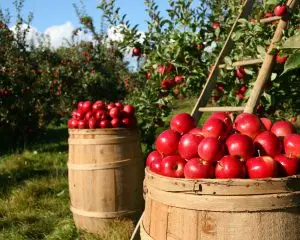If you look at your salad bowl you will find out that, most of our food ingredients, even those we consume at home and not in restaurants or take-out, require significant disinfection.
Studies in the field of food hygiene found that disinfection in the food industry is expected to grow in the upcoming years at a rate of 4.4%. This is not surprising because disinfection is required at many points until we reach the consumer: picking and sorting the fruits and vegetables, dividing them into crates on the way to supermarkets, packing vegetables or fruits into packages (e.g. for strawberries, grapes and blueberries) or peeling the fruit into prepared packages (As is customary for pineapples). Often the packages themselves may also contain different pathogens.
So, if the need is Unambiguous: Why does disinfecting fruits and vegetables are so complex?
- The path from the trees/field/orchard is particularly long and includes many stops. Even if using chemical disinfection or rinsing, it is very difficult to impossible, to ensure that there will be no further contact of human touch until the plate. This is especially relevant when it comes to vegetables and fruits and herbs that are packaged in bags.
- Chemical or biological disinfection is not suitable for food because it leaves behind material residues that are not intended for contact, let alone for human consumption. Cleaning with soap and water is effective but not practical when it comes to commercial quantities. Also, some products cannot be cleaned at all with any type of soap and water (for example herbs such as thyme, rosemary, or dill)
The solution? Research has long been done on the effectiveness and safety of UV disinfection using xenon lamps on food. This method has received an official stamp from the FDA which has approved its use. Not only that, but it has also been found in several studies that the use of a xenon light for sanitation, can also extend the shelf life of vegetables and fruits and save money. This is a win-win situation.
But how to choose a UV disinfectant? We recommend choosing a reputable company with experience in the field. Xenon light disinfection offers efficient and fast disinfection as they destroy the cells up to a level of LOG 4 (99.999%), in rapid pulses in the range of 200-300 which has been proven to be most effective in destroying pathogens.
Tzachi Sabati
CEO, IZAK Scientific
Physicist specializing in photonics and quantum technologies, with deep expertise in quantum sensors and advanced optical systems. Leads the Advanced Quantum Lab course at the Technion, bridging academic excellence with industry innovation. At IZAK Scientific, provides cutting-edge photonics-based solutions, developing customized inspection and sensing systems for R&D and production. Passionate about advancing quantum sensing applications and integrating novel technologies to meet industry needs.

